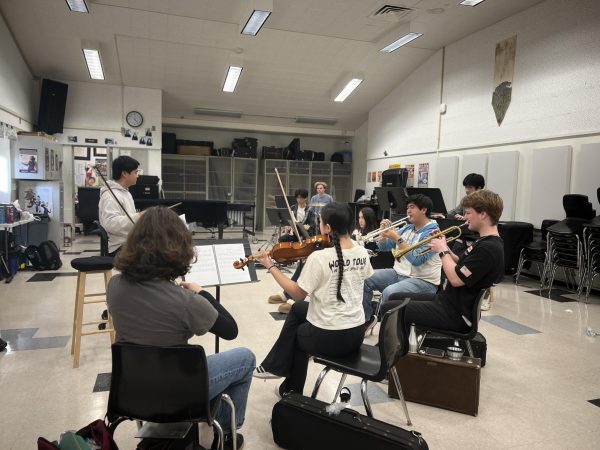Get Your Acts Straight!
A contextual explanation of the Insurrection Act of 1807. I’ll let you decide if you need to be worried.
Last Monday, President Trump threatened to impose on America the Insurrection Act of 1807, which, thanks to unreliable media and uneducated opinions, has been wrongly labeled as complete martial law. The Insurrection Act gives the President of the United States the authority to use active military personnel, like the National Guard, to maintain peace during civil unrest or disobedience of federal laws.
The Insurrection Act has five sections, and two of these sections portray the true authority of the president’s power when enacting the act. Section 251 states that the president may send in troops into a state upon the request of the state legislature or governor. Section 252 states that if the president considers that there is an unlawful obstruction or rebellion against the authority of the United States, the president may use the militia and armed forces to enforce federal authority. Section 252 allows the possibility for the president to send in troops without the consent of the governor.
If the president enacted the Insurrection Act without valid reason of rebellion or insurrection, “and the president use[s] the federal government’s military without the permission of the state, that would therefore not hit either of the two prerequisites for using the Instruction act,” said AP United States History teacher Dane Hill. “… yet [the president] must state a proclamation, [and with] no proclamation or without either of those two qualifications, you could consider it to be martial law.”
The 1878 Posse Comitatus Act also must also be taken into account, as it states that the president must get approval or authorization by the Constitution or an act of Congress, in order to limit the powers of the federal government in its use of the military on domestic soil. (It should be noted that the act does not prevent the military from acting within its home state or adjacent state if invited by the state governor.) This act also states that the president must give a “proclamation”, such as warnings to groups to disperse.
“Has the president given a proclamation? Or has he just condemned the protests, the violence? That law needs to be considered when talking about putting down the peaceful protests,” said Hill.
The Insurrection Act has been amended multiple times to fit the challenges America has faced, and in order to understand the complex history of the president’s military powers, one must understand what came before the Insurrection Act: the Militia Act of 1792.
During the presidency of George Washington, the Militia Act was made to protect the country from the dangers of foreign nations, and it gave the president the right to use the military and intervene if invaded. In 1807, it was amended to the Insurrection Act to “suppress rebellion within the country itself,” said Hill. “Right after the revolutionary era, the most influential leaders of our country [had] a deep fear and resentment of a strong, central government.”
Jefferson had a fear of the standing army, yet believed it was necessary due to violations of the Embargo Act, which he believed could (and did) lead to war with Britain and France.
“The Insurrection Act was purposely enacted to help the central government keep the peace, and was not intended to wage war on American citizens,” said Hill.
For example, during Nat Turner’s Rebellion of 1831, federal troops were sent into Virginia to put down the rebellion. “In that case, the federal government argued [that the act was not being used against American citizens], as, at the time, slaves were not considered citizens,” said Hill.
If President Trump were to enact the Insurrection Act, the National Guard would be used against American citizens. However, this is not unprecedented. In 1894, President Grover Cleveland sent troops to combat the nationwide Pullman Strike, caused by lowered wages and laid-off workers.
The Insurrection Act was also used to promote the rights and civil liberties of minority citizens. In 1957, President Eisenhower used the National Guard to protect Little Rock Nine through integration into the Arkansas Central High School. In 1962, President John F. Kennedy used federal troops to integrate “Ole Miss” Mississippi after many racist American citizens came out to prevent desegregation.
“In over 200 years, this act has only been used 19 times, but it’s not unprecedented to have used it against American citizens. Usually, however, it is used to protect civil rights, to protect the method of equal treatment under the law,” said Hill.
President George H.W. Bush enacted the Insurrection Act twice. Once in 1989 for Hurricane Hugo, and the last time in 1992 during the Los Angeles riots after the four police officers that subdued and beat Rodney King were acquitted.
“In that case, given that those riots were promoting equality under the law for the Black community, by suppressing them as riots, many argued that it was used in the antithesis against civil rights,” said Hill. “The other side of the argument is always going to be, which we can see with President Trump right now, [is] that they are keeping law and order.”
Direct conflict between state’s rights and federal power occurred throughout history, and “we’ve seen the federal government win that battle many times,” said Hill. The idea of enacting the Insurrection Act has met resistance from state leaders, such as from the Governor of Illinois, J.B. Pritzker. Pritzker rejected the idea of President Trump invoking military personnel to come into the state, and stated on MSNBC that “[President Trump] does not have the ability to send troops in without being called on by the states to do it… We don’t need that.”
This false statement speaks volumes on the tensions of power, yet Hill believes that “given the backlash that [President Trump] has gotten from it, [I don’t] think that [the president] will enact the Insurrection Act.”
Pritzker has spoken out on the peaceful protests, stating that, “this president instead… is focusing on the very few protesters out there that are causing violence and property damage…” (MSNBC) which is concerning, as President Trump could enact the Insurrection Act with the reason of the lootings and violence, and after bringing in the National Guard for that purpose, end up correlating the peaceful protests with the looting and violence. This correlation would be an infringement upon the American citizens’ First Amendment rights, yet this hypothetical situation wouldn’t be the first time Trump has infringed upon the First Amendment right.
“We have the right to petition the government, and therefore it is certainly very difficult for the president to put down a peaceful protest, and it would be political suicide to do so,” said Hill.
However, on June 1st in Washington D.C., President Trump did just that, allowing a peaceful protest to be forcefully broken up before the enacted curfew, in order to get a photo op. “[President Trump] has been heavily criticized for the use of tear gas on the protesters, and it was before the curfew was enacted. There’s no justification to be able to do that,” said Hill. “The president is Commander in Chief, in control of the military, but not to the extent where it can infringe on states’ rights, which is a huge theme in American history.”
Whether or not the Insurrection Act is enacted will play a huge role in the future of America, as the unleashing of the United States military on America may lead the way to a world of “martial law”. Citizens of America may find themselves beginning to think just as Thomas Jefferson did in the enactment of the Insurrection Act of 1807, as according to American Pageant, he believed in the democratic ideal that “large standing armies [were] standing invitations for dictatorship.”
Aurora Khatibi Garrity (11) is a staff writer and member of the social media team for The Point! At PVHS, she is excited and ready for a year of growth...






